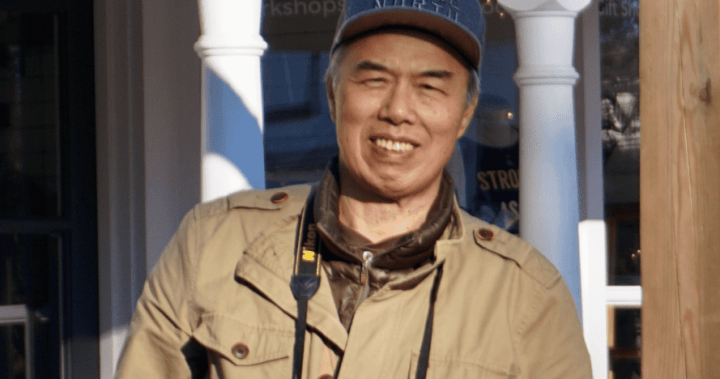Ontario city facing full $18.3M cyberattack bill after insurer denies claim

Hamilton taxpayers are looking at fronting the full cost of a devastating 2024 cyberattack after the city’s insurance company denied its claim.
Councillors were told at the general issues committee meeting on Wednesday that the city’s claim was denied because multi-factor authentication had not been fully implemented at the time of the attack.
According to the city’s insurance policy, no coverage was available for any losses where the absence of multi-factor authentication was the root cause of the cyber breach.
“I understand why Hamiltonians are frustrated — this was a serious and costly breach,” Mayor Andrea Horwath said in a news release Wednesday.
“We expect our public systems to be strong, secure, and dependable. This incident highlights that the city fell short of that standard — and we’re not okay with that.”
Attackers demanded $18.5M in ransom
On Feb. 25, 2024, Hamilton experienced a cyberattack that disabled roughly 80 per cent of its network and impacted services like business licence processing, property tax, transit planning and finance and procurement systems for weeks.
A few systems were unrecoverable, the city said, including permit applications and licensing, fire department records management and traffic signal system management.

The attackers launched a complex ransomware attack through an external internet-facing server, the city said. After covertly studying the city’s systems, they encrypted systems and data to render them unusable and attempted — but failed — to destroy all the city’s backups.
The attackers demanded a ransom of roughly $18.5 million in exchange for a decryption tool to unscramble the city’s data. The city did not pay the ransom, adding it contained the incident within two days and managed to provide critical services throughout.

Get breaking National news
For news impacting Canada and around the world, sign up for breaking news alerts delivered directly to you when they happen.
“Paying the ransom would have increased the City’s risk and financial exposure,” the city said in the news release, saying technical advisers added decryption tools from cybercriminals are very often unreliable.
“Even with a working tool, safe restoration would have taken significant time and money. Additionally, paying ransom funds could fuel future cybercrime and support international organized crime and terrorist organizations.”
City has spent $18.3M in upgrades so far
Mike Zegarac, general manager of finance and corporate services, told councillors on Wednesday the city would have to incur costs regardless of whether it had paid the ransom.
To date, the city has spent $18.3 million on immediate response, system recovery and third-party expert support. There may be additional invoices still to be received for some items that will be included in future reports, staff noted.
Of the $18.3 million, $14 million has been spent on external experts who have helped the city’s response, redesign and future strategies, staff added.

At the general issues committee meeting Wednesday, Ward 2 Coun. Cameron Kroetsch took issue with the “looseness” of Hamilton’s cyber strategy.
“There weren’t protocols in place for many parts of the city, including how we connected to devices … and there was virtually no training provided whatsoever to councillors with respect to what to do here,” he said.
“This didn’t happen due to councillors’ negligence of any kind, or councils for that matter. But there have been several reports I’ve monitored outside of being an elected official where I saw recommendations being made to address this, and the investments not being made to pick up with those for whatever reason … we knew we had these problems with place … this has to be taken more seriously.”
Ward 9 Coun. Brad Clark said he found it “very frustrating” that multi-factor authentication wasn’t put in place years ago after learning from a staff member at the meeting that Hamilton’s insurance company sought it in late 2022.
When its claim was denied, the city obtained a third-party review of the decision and did not pursue further legal action as it learned the insurer’s action was based on coverage terms.
“The city had full knowledge we were not compliant with the exclusion in 2023,” he said.
“How does council find out it wasn’t done if staff doesn’t share it with us? I find it immensely frustrating there has been zero accountability on this; this chamber, we’ll be held accountable in a year and a bit; front bench and all the staff, no accountability for this incident. I can’t explain that to my residents.”
The city has since said it has enhanced its cyber controls and renewed its insurance coverage.
In her statement, Horwath said Hamilton will learn from the incident.
“We acted swiftly, and we’re moving forward with focus and determination. This is also a clear and indisputable reminder that timely investments in public infrastructure help prevent far more costly reactive responses down the line,” she said.
“The City of Hamilton is rebuilding with resilience and future-proofing in mind, while strengthening our systems, improving protections, and ensuring better service and safeguards for our entire community.”
© 2025 Global News, a division of Corus Entertainment Inc.


The Supreme Court of Canada has declined to hear an appeal of a lower-court ruling that upheld a First Nation’s ownership of a stretch of land at a popular Ontario beach after a lengthy dispute.
Canada’s top court has dismissed the appeal request from landowners and the province after a stretch of land along Sauble Beach was returned to Saugeen First Nation in 2023.

Get breaking National news
For news impacting Canada and around the world, sign up for breaking news alerts delivered directly to you when they happen.
This dismissal comes nearly two months after members of Saugeen First Nation changed the iconic “Welcome to Sauble Beach” sign that greeted beach visitors.
The temporary “Welcome to Saugeen Beach” sign was erected to reflect the First Nation’s ownership of the land, with the town’s mayor expressing disappointment that he wasn’t alerted of the change.
The Ontario Court of Appeal upheld last December the decision that 2.2 kilometres of the coastline in South Bruce Peninsula was incorrectly surveyed 170 years ago.
The portion of the land is valuable fishing ground for the First Nation community and was surrendered in 1854 in an agreement with the Crown to give up portions of Bruce Peninsula.
© 2025 The Canadian Press

The majority of post-secondary students in Ontario are stressed about their finances heading into the school year, a new survey found.
The survey from TD Bank, which collected data from post-secondary students across the country, found that 92 per cent of all respondents in Ontario are stressed about their finances.
“The survey was clear that our students are experiencing a lot of stress, which is a bit unique from previous generations because of the multitude of factors that are just hypersensitive at this point, with higher unemployment, higher cost of living, higher tuition,” says Joe Moghaizel, vice-president of everyday advice journey at TD.
The survey found that while 78 per cent of Ontario parents believe their child has experienced financial stress in the past three months, that figure was well below the actual number of 92 per cent.
“What’s interesting is the amount of pressure and stress that they’re currently facing and feeling, and the disconnect between what their parents believe they’re experiencing,” Moghaizel says. “Parents were not aware of the amount of stress that the students are feeling.”
Moghaizel pointed to a number of things leading to this financial pressure, including the high cost of living and high rate of unemployment among young people in a difficult job market, leading to many students to have what he called a volatile income.

Get breaking National news
For news impacting Canada and around the world, sign up for breaking news alerts delivered directly to you when they happen.
The survey also found that Ontario had the highest percentage of students stressed about tuition costs at 35 per cent, compared with an average of 26 per cent in other provinces.
The government of Canada estimates it will take almost 10 years for the average student to pay off their student loans and the total student loan debt in Canada surpassed $23.5 billion in 2022.
“You go back to over two decades ago, when I was in school, the financial pressures that students deal with now are significantly higher because tuition is a lot more expensive and the cost of living is more expensive, and inflation has really taken a bite at students,” Moghaizel says.
Another key takeaway from the survey was that 36 per cent of all respondents found that social spending stressed them out the most.
Moghaizel says the social pressure speaks to the online environment that students find themselves in today, where everything they do is shared online.
“They all feel the pressure to spend and keep up, which, again, it’s not too dissimilar from other age groups and we’re keeping up with the Joneses and just keeping up with the spending habit of your circle creates a bit of pressure,” he says.
Moghaizel says this can leave post-secondary students feeling ill-equipped to manage their finances better.
Despite the concern, Moghaizel hopes this information is not discouraging to students and is an opportunity to start establishing good financial habits early in life.
He said that with societal pressures, it’s good for students to understand their needs versus their wants, and focus on prioritizing the necessities. Moghaizel says that through tracking their spending, students can see where all of their money is going.
“We want to make sure that we’re equipping students with the right understanding of financial knowledge for the products and services,” Moghaizel says.
© 2025 Global News, a division of Corus Entertainment Inc.

A Canadian man has pleaded guilty to illegally photographing classified U.S. defence facilities at the Space Force military base in Cape Canaveral, Fla.
Xiao Guang Pan, 71, of Brampton, Ont., pleaded guilty to three counts of unlawful photographing of military installations without authorization on three separate days in early January.
A U.S. District Court in Florida judge put Pan on probation for 12 months and immediately ordered him deported to Canada by U.S. Immigration and Citizenship Enforcement (ICE) officers under the U.S. Immigration and Nationality Act, citing his violations of American espionage laws.
Pan did not immediately respond to a request for comment.
A U.S. Department of Justice official was unsure about where Pan is in the ICE deportation process.
Pan’s guilty plea and deportation come as anxiety grows among U.S. lawmakers and ordinary Americans about hundreds of unidentified drones flying over sensitive American military bases amid concerns about foreign surveillance and spying.
A copy of Pan’s plea agreement reveals a stark contrast between what Pan said he was doing in Florida in January, when he was stopped by police, versus what U.S. federal agents actually found on his drone, phone and storage devices after seizing them.
On an artist biography page published by the Brampton Arts Organization, Pan stated he was born in China in 1953, immigrated to Canada in 2001 and has lived in Brampton since 2003.
Pan worked as a Best Buy Canada technician for 18 years until retirement in 2022, the biography adds.
Pan entered U.S. via Detroit
Pan entered the U.S. on a tourist visa at the Ambassador’s Bridge in Detroit, Mich., on or about Nov. 2, 2024. The court documents don’t suggest what Pan was doing or where Pan travelled in November and December.
The retiree was charged by summons on Feb. 11 after the National Aeronautics and Space Administration (NASA) detected drone activity near the Space Force Base and called in law enforcement on Jan. 7.
Brevard County Sheriffs responded. They saw Pan operating a DJI Mavic Pro 3 unmanned drone quadcopter from a parking lot in Port Canaveral and learned he’d been in the area for three days.
The local officers then tipped federal law enforcement agencies.
Federal agents caught the Brampton resident using his powerful unmanned drone and a separate camera with telephoto lenses to photograph and video classified military facilities and equipment near the Space Force base on Jan. 5, 6 and 7, without the base commander’s prior authorization as required under U.S. law.

Get breaking National news
For news impacting Canada and around the world, sign up for breaking news alerts delivered directly to you when they happen.
According to a statement of facts found in the plea agreement, which Pan signed and initialled on every page, U.S. federal agents interviewed him twice – no dates were given – and asked the Canadian what he was doing with the drone.
They also warned him: lying to federal agents is a federal crime in the U.S.
“Pan told the agents that he had flown his drone to take pictures of the beauty of nature, the sunrise, and the cruise ship port. He stated that he had not seen any launch pads and that he did not know that he was near a military installation,” the plea deal states.
Pan voluntarily submitted his devices to U.S. agents for a forensic data extraction.
That’s when the investigators found more than sunrises, nature and cruise ship videos.
The data showed Pan had flown his drone nine times and taken 1,919 photographs and videos during his three-day Florida visit, the plea deal states.
Of those 1,919 photos and videos, 243 photographs and 13 videos showed specific images of Space Force base military infrastructure and launch facilities, including fuel and munitions storage facilities, security checkpoints, and a Navy submarine platform, according to the plea agreement.
On Jan. 6, his second day of flying the drone quadcopter, Pan took nine videos and 166 photographs of Space Force installations.
This time, he launched his drone from a location several miles closer to the base; his photographs and videos captured the same military infrastructure as on Jan. 5, but in higher quality and from different angles, according to the plea agreement.
Pan also captured images and videos of mission control infrastructure and fuel and munitions facilities, including a photograph of a Space Launch Complex and payload processing facilities operated by two defence contractors.
On the third day of his drone flying, and before he was encountered by law enforcement, Pan recorded two more videos and took 56 photos.
Day 3 images included security checkpoints
His Day 3 images and videos showed roads, power distribution infrastructure, security checkpoints, mission control infrastructure, national security space launch infrastructure, fuel and munitions storage, and naval infrastructure, the plea agreement states.
After police stopped Pan on Jan. 7, federal agents interviewed him twice.
During those interviews, Pan was warned that lying to agents is a federal crime. He did so anyway, the plea deal suggests.
In addition to telling agents he flew his drone to record nature, sunrises, and cruise ships and didn’t know he was near a military base, Pan said his drone sends alerts and warnings to his handset and he received no alerts or warnings, the plea deal adds.
Investigators recovered flight log data from Pan’s quadcopter. It showed that on all three days he flew, the drone logged several alerts and sent operator messages about altitude and FAA airspace violations.
On Pan’s cell phone, agents also found several screenshots he created, including several Google Maps satellite overviews of Cape Canaveral. One screenshot taken Jan. 7 while Pan was at his drone launch location, prominently displayed the words “Cape Canaveral Space Force Station.”
Pan surrendered his $5,000 quadcopter
Pan was charged in February after a multi-agency probe led by the U.S. Federal Bureau of Investigation, U.S. Homeland Security, and the U.S. Air Force Office of Special Investigations.
Pan surrendered his $5,000 quadcopter, control equipment and storage devices that housed his videos and photos to the U.S. authorities.
He is also banned from returning to the U.S. without prior consent from the Secretary of the Homeland Security department.

-

 Uncategorized3 months ago
Uncategorized3 months agoShop Proud, Eat Proud, Be Proud — Ottawa Canada Day Market This June 28th
-

 3 months ago
3 months agoCanada’s world junior trial saw juries tossed, intense testimony. Here’s a recap
-

 2 months ago
2 months agoRing of Fire road to bring prosperity to First Nation, problems for caribou: report
-

 2 months ago
2 months agoMeasles circulating in northeastern B.C. community, health officials warn
-

 3 months ago
3 months agoAnishinabek Nation chief says he briefed Ontario police on protests against Bill 5
-

 2 months ago
2 months agoFormer major leaguer, Jays doctor Ron Taylor dies
-

 2 months ago
2 months agoJagmeet Singh apologizes for attending Kendrick Lamar concert after Drake calls him out
-

 2 months ago
2 months agoDreaming of a lakeside cottage but can’t afford it? Co-ownership could open that door







